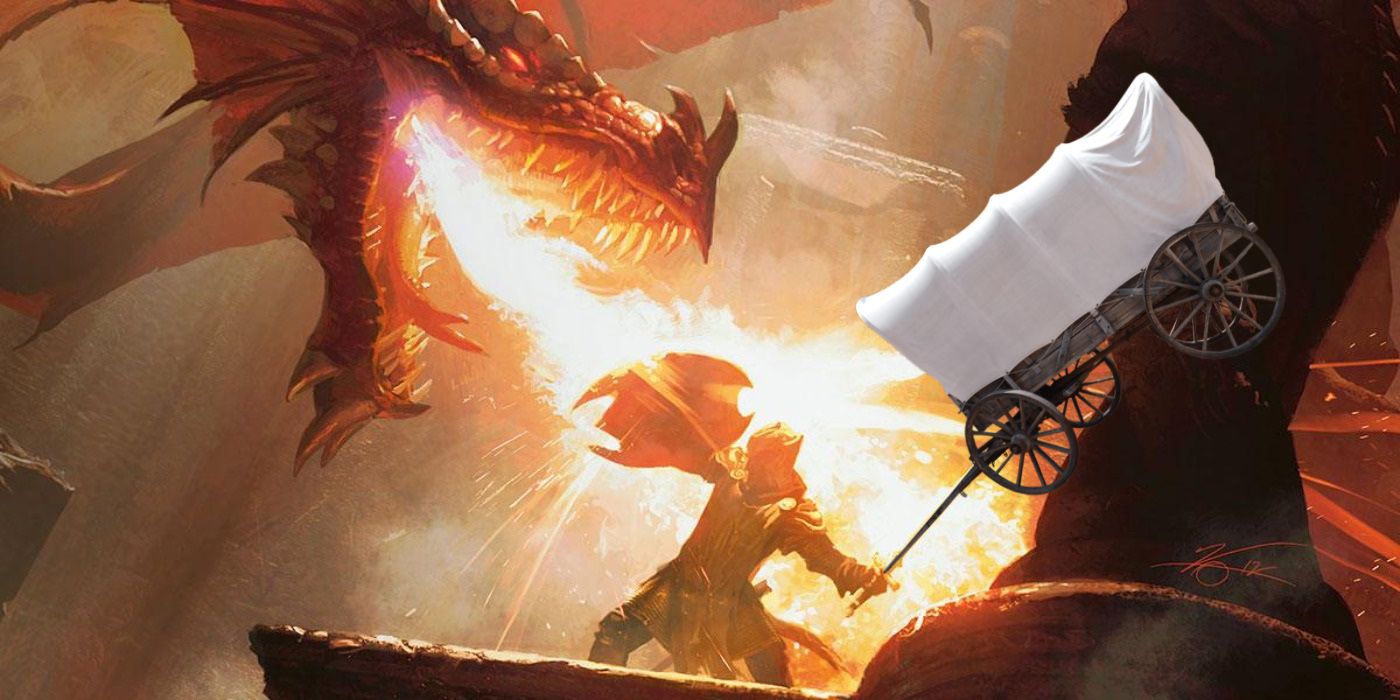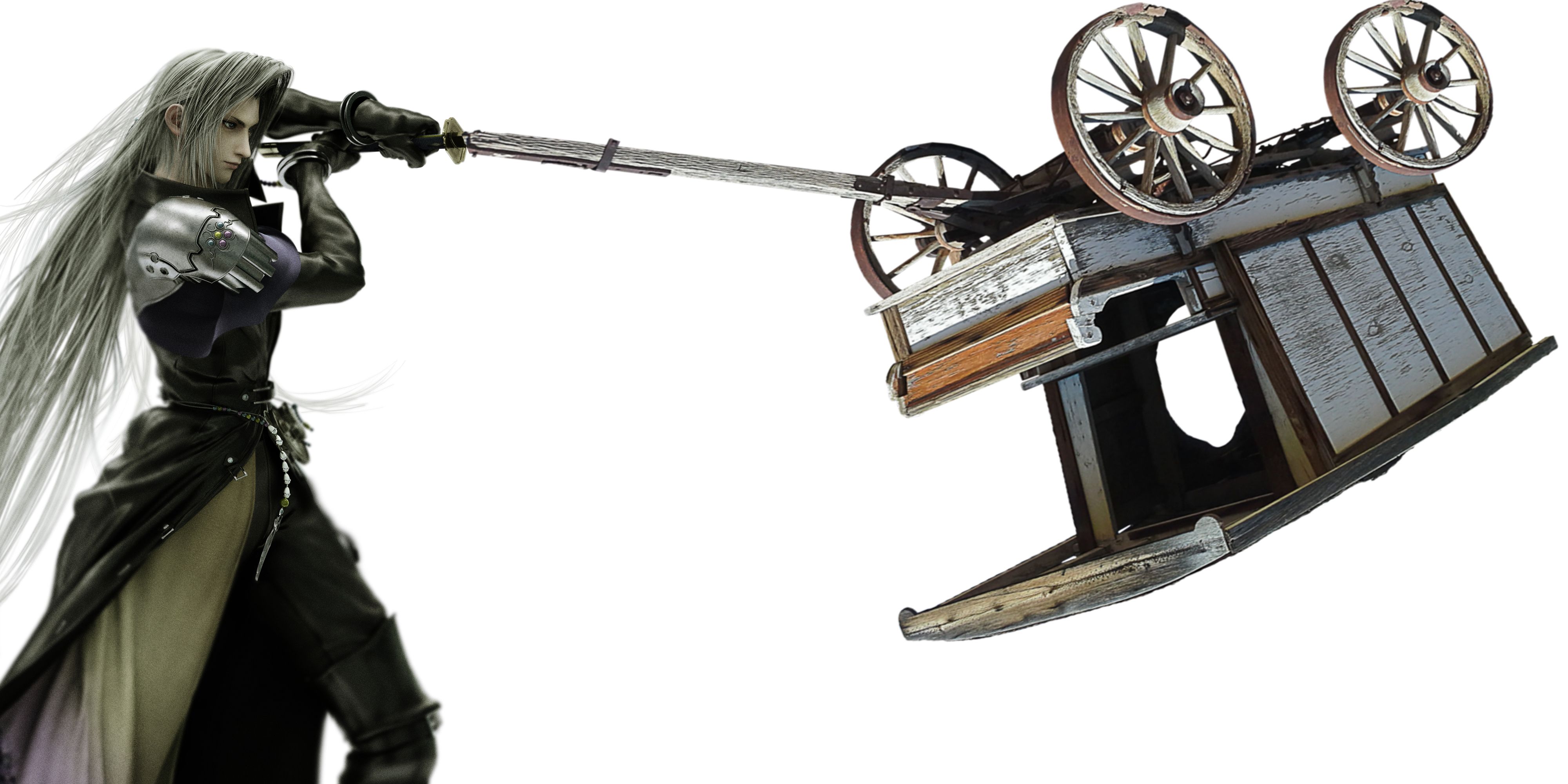Dungeons & Dragons players have resorted to all kinds of improvised weapons in the heat of battle, but few warriors were as feared as those with the strength to fight with a wagon. It's common for D&D characters to carry a mixture of weapons at all times, but there was a time where this oversized improvised weapon was the most powerful.
The most commonly used D&D weapons for the warrior classes include greatswords, longbows, longswords, and maces. In the older editions of D&D, there were far more options on offer. The third edition of D&D had a category for exotic weapons, like the orc double axe and the gnome hook hammer, which required a Feat to use without penalty. These weapons often had special abilities, but it was generally hard to find magical variants in the wild.
A 3.5-edition D&D book called Complete Warrior had a section dedicated to improvised weapons. Players would usually only use these in emergencies, so the edition's main rulebooks only had a general outline for their use. Complete Warrior provided additional rules for improvised weapons that increased their damage with weight, capping out at 200lbs, and the book's suggestion for what the player could use as a heavy weapon was a wagon.
How Dungeons & Dragons' Improvised Wagon Weapon Worked
Weighing at least 201 pounds, the wagon was the heaviest weapon listed in the improvised table, capable of dealing 5d6 damage per hit. This is an absurd amount of damage, as most weapons only had a single damage die per hit. If the player could add on Strength, magic, and Feat bonuses, the wagon would deal incredible damage. Although it's certainly odd to imagine someone swinging a whole wagon around, it was a case of D&D's rules being played literally, as the Player's Handbook stated characters with a Strength of 15 can lift something that's over 200lbs. It's common for Fighters to have a Strength score of 18-20 at level one, which doesn't account for stat bonuses and spell buffs players often receive over time. The biggest downside to using D&D's wagon weapon was a -4 penalty to hit, which is hard to bypass through official rules. The warrior classes have the highest base attack bonus of all classes, though, and they could quickly get back up to speed with some spell buffs.
One downside to using wagons was the lack of magically empowered versions available in the wild. It's common for adventurers to stumble upon magic arrows and blades in dungeons, but it's unlikely they'd come across a +5 wagon embedded in a block of stone, waiting for someone worthy to pull it from its resting place. A way around this was to make friends with the party spellcaster, as the Magic Weapon and Greater Magic Weapon spells granted magical damage bonuses and lasted for a long time. The wagon-wielder could also save up cash to purchase a wand of the spell, as this would allow the spellcaster to save spell slots out in the field. Whacking enemies with a wagon may seem impractical, but there were few weapons as powerful in the old editions of Dungeons & Dragons.
Source: Complete Warrior


